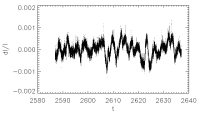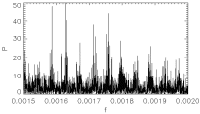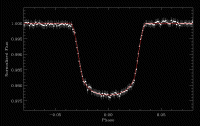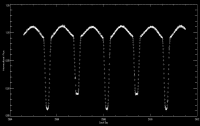Unexpected Quality of Raw Data from Early COROT Observations
3 May 2007
CoRoT started its first science observation period on 3 February 2007 and has already returned data with a quality that is exceeding the pre-launch expectations. CoRoT's accurate and continuous observations of stellar luminosities for selected stars allows for the study of their interiors and for the detection of exoplanets when they transit their parent star.The data presented here are raw and not yet fully calibrated, but already reveal the above-expectation capabilities of the spacecraft instruments. Image 1 shows the transit of the first exoplanet discovered by CoRoT, CoRoT-Exo-1b, a Jupiter-sized planet orbiting a solar type star in the direction of the Monoceros constellation. The exoplanet was detected with an error of only 3×10-4 or 0.03% during one hour of observation. On applying all the corrections to the light curves, the error will be reduced to only 5×10-5. When combining observations of many more transits of the planet in front of the star, the precision will approach just one or a few times 10-5.
Variations in the light of another bright solar type star, that was observed continuously during a ~50 day period, show fluctuations on time scales of a few days (image 3). The accuracy of the raw data is 5 × 10-5 per minute. Spectral analysis of the corresponding frequency power spectrum (image 4) will allow study of the star's internal structure and its age.
 |
 |
|
Image 3. Variation in the luminosity of a solar type star observed over a period of ~50 days |
Image 4. Frequency power spectrum of the luminosity variation for the same star |



